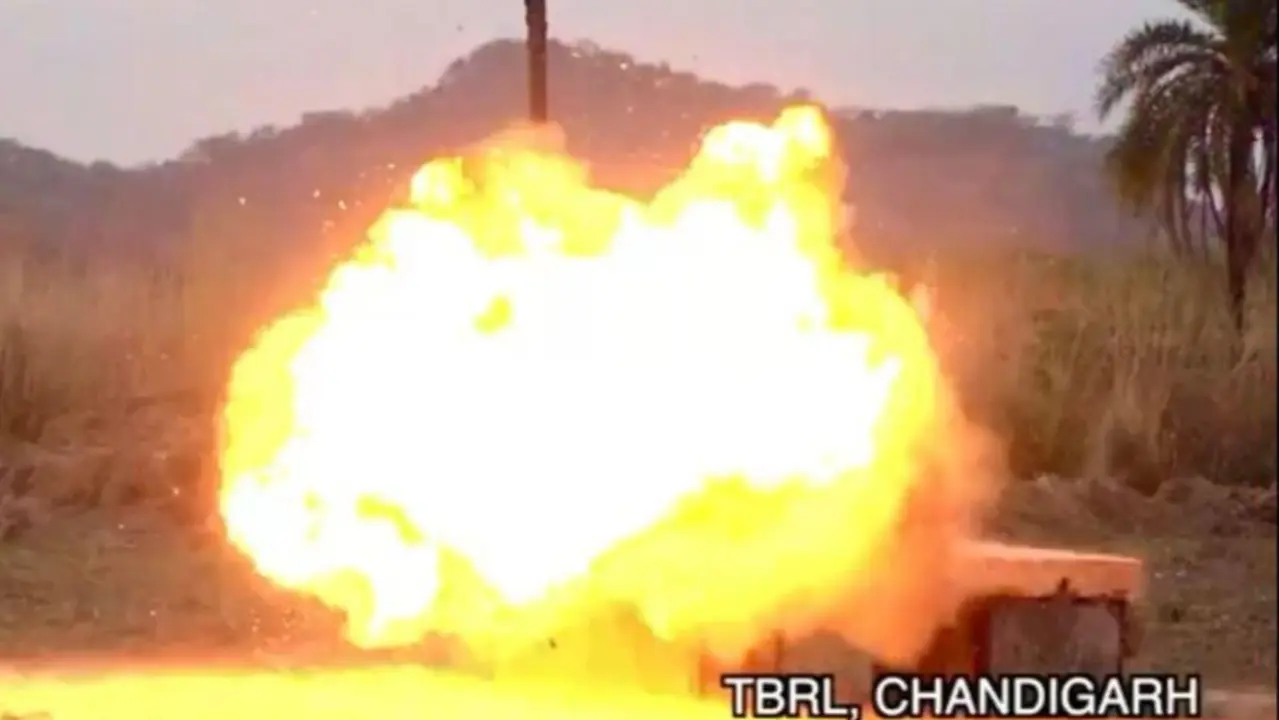Updated 28 March 2025 at 12:34 IST
Indian Army's Fleur-De-Lis Brigade Successfully Tests FPV Drone, Shares Video
Indian Army's Fleur-De-Lis Brigade has successfully tested the FPV drone with an anti-tank payload; a video of this groundbreaking milestone has been shared.
- India News
- 2 min read

New Delhi: The Indian Army's Fleur-De-Lis Brigade has successfully tested an FPV drone armed with a kamikaze-style anti-tank munition designed for impact-based attacks, in a first of its kind project.
The Indian Army has also shared a video of the drone testing and has also issued a statement explaining the groundbreaking milestone achieved in tactical drone warfare.

Indian Army's Fleur-De-Lis Brigade Successfully Tests FPV Drone
According to the Indian Army, the Fleur-De-Lis Brigade has reached a significant milestone in tactical drone warfare by successfully designing, testing, and validating an FPV drone fitted with a kamikaze-style anti-tank munition, marking the first project of its kind within the Indian Army. In partnership with the Terminal Ballistics Research Laboratory (TBRL) in Chandigarh, this initiative, which began in August 2024, has involved thorough research, development, and testing to improve the effectiveness of low-cost, high-impact aerial strike systems.
The system underwent thorough testing, starting with explosive trials, followed by assessments of the aerial vehicle and the trigger mechanism. Each phase was validated by TBRL scientists, ensuring the drone's effectiveness, precision, and dependability in delivering the payload. The successful outcomes position this pioneering FPV drone project as a transformative force multiplier in contemporary tactical operations.
Advertisement

All About the FPV Drone
The FPV drone was fully constructed in-house at the Rising Star Drone Battle School, which has produced over 100 drones within the unit by March 2025. This self-sufficient approach provided full control over the build quality, component integration, and real-time adjustments based on TBRL guidelines. It also enhanced the drone's structural integrity, weight distribution, and flight dynamics, ensuring superior maneuverability and efficiency for operational use.

Speaking about the drone's trigger mechanism and its dual-safety features, the Indian Army explained in its statement, that the trigger mechanism has been carefully crafted to integrate dual safety features, guaranteeing that the payload can only be armed and released under tightly regulated conditions. It is activated solely by the pilot using the radio controller, preventing accidental detonation, increasing reliability, reducing risks for pilots and the personnel handling the drone and ensuring accurate deployment during missions.
Advertisement
Furthermore, a live feedback relay system delivers real-time updates on the payload’s status to the pilot through the FPV goggles, allowing for better decision-making while operating the drone.
Get Current Updates on India News, Entertainment News, Cricket News along with Latest News and Web Stories from India and around the world.
Published By : Ananya Srivastava
Published On: 28 March 2025 at 11:33 IST
